Rarely have I had as much fun with a pair of speakers as when I tested the Klipsch Forte III SE four years ago. Sunch enthralling speakers are rarely found. So it did not matter that they were not among the most super-resolved and neutral speakers.
After all, listening to music is about being carried away, not to mention touched and moved, and very few speakers do just as well as a pair of Klipsch with compression horns.
Since the test was made, Klipsch has upgraded the entire Heritage series to which Forte IV belongs. Everyone from the largest and perhaps most legendary speaker in the series, the Klipschorn, to the far more compact Heresy has received a mechanical and electrical overhaul in the form of improved cabinets as well as new drivers and crossovers.
Although Forte first saw the light of day in 1985, it is largely a classic Klipsch speaker. The fourth edition that we are testing here looks like Forte has always done, but the engineers have improved the speaker on some important points.
The speakers are hand-built at Klipsch in Hope, Arkansas, USA, and they look really good. The cosmetics have been given a boost, and they come in pairs with matching wood veneer in American walnut, cherry, black ash or a gray-mixed oak veneer.
The dimensions of the cabinet have changed a bit, but the big improvements have taken place inside.
Klipsch has not deviated from Paul W. Klipsch’s basic thesis that an easy-to-operate and efficient speaker sounds better because it has less loss in coils, crossovers and devices. This is a recipe we welcome, for we have often experienced that the most easily powered speakers in our group tests has been the most satisfying to listen to.
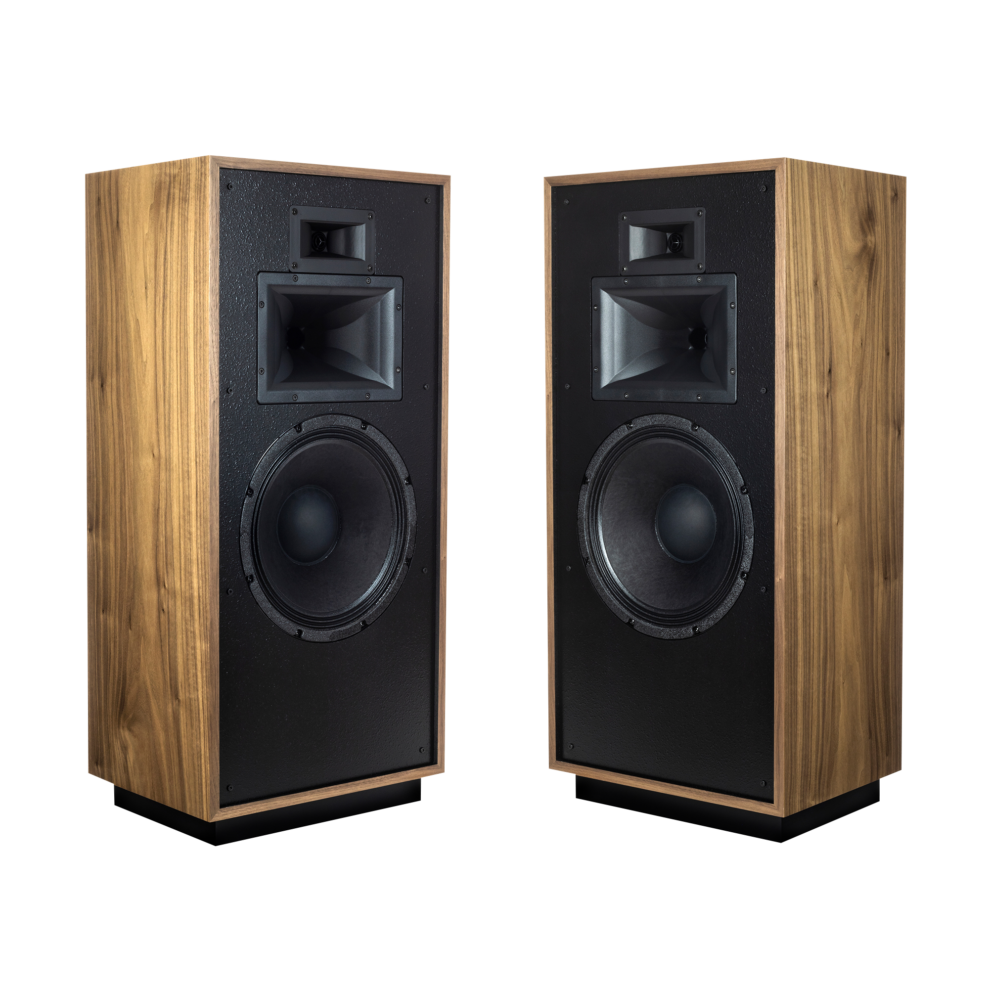
Better drivers
The construction is still three-way with a 15-inch passive woofer on the back. On the front we find the same 12-inch woofer in fiber composite that we know from the previous generation of Forte, but the midrange and tweeter has been changed on the Forte IV.
The new midrange has a 4.45 cm K-702 compression unit in polyamide placed in a K-703-M Tractrix horn, while the treble is provided by a K-79T horn, which houses a K-100-Ti compression unit of 2, 54 cm with titanium diaphragm. The tweeter has a phase plug at the front, which should provide a more uniform frequency response and wider and more even distribution.
The crossover has also been changed. It has the same relatively steep division between the drivers as the more expensive Klipshorn and has got better components for a more lifelike and realistic sound image, according to Klipsch. Also new is that the bi-wiring terminals are mounted on an aluminum plate on the back.
The passive unit on the back is instead a bass reflex port, and it is the pressure from the woofer in front that drive the movements of the passive diaphragm.
The 15-inch job is to contribute more weight and depth to the bass, and although the speakers do not go much deeper than 38 Hz (-3 dB), the gods know that nothing is missing here except the very deepest bass.
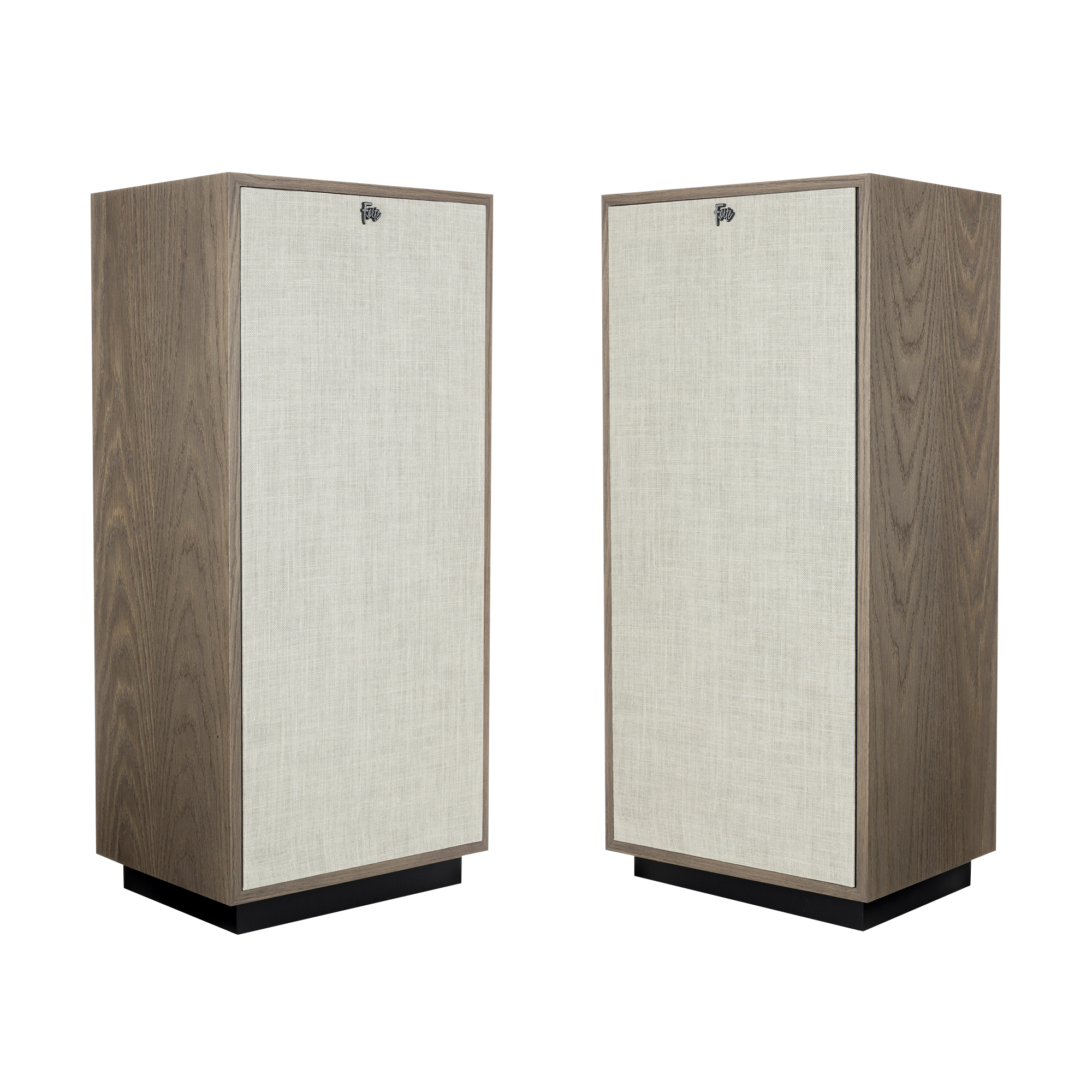
Can be mounted against the back wall
The two woofers can scare the heck out of anyone if you turn up the volume.
At least if you do as in the pictures and push the speakers into the back wall. Then it resounds well in the room, but I would recommend that they do not get much closer to the wall than 10-20 cm. Otherwise you can get an exaggerated and in the worst case sloppy bass reproduction.
In my room I put the speakers where I once had the Forte III SE. That is, 90 cm from the wall and angled slightly inwards towards the sofa – just enough that I could still see the inner walls of the speakers when I sat in the middle of the sofa. It worked great, with really good balance and fast bass.
With a sensitivity of 99 dB and a impedance of 8 ohms, they play loud even with small amplifiers like the Hegel H90. But the H390, a tube amplifier from Audio Research or a well-grown McIntosh will obviously be a lot more fun.
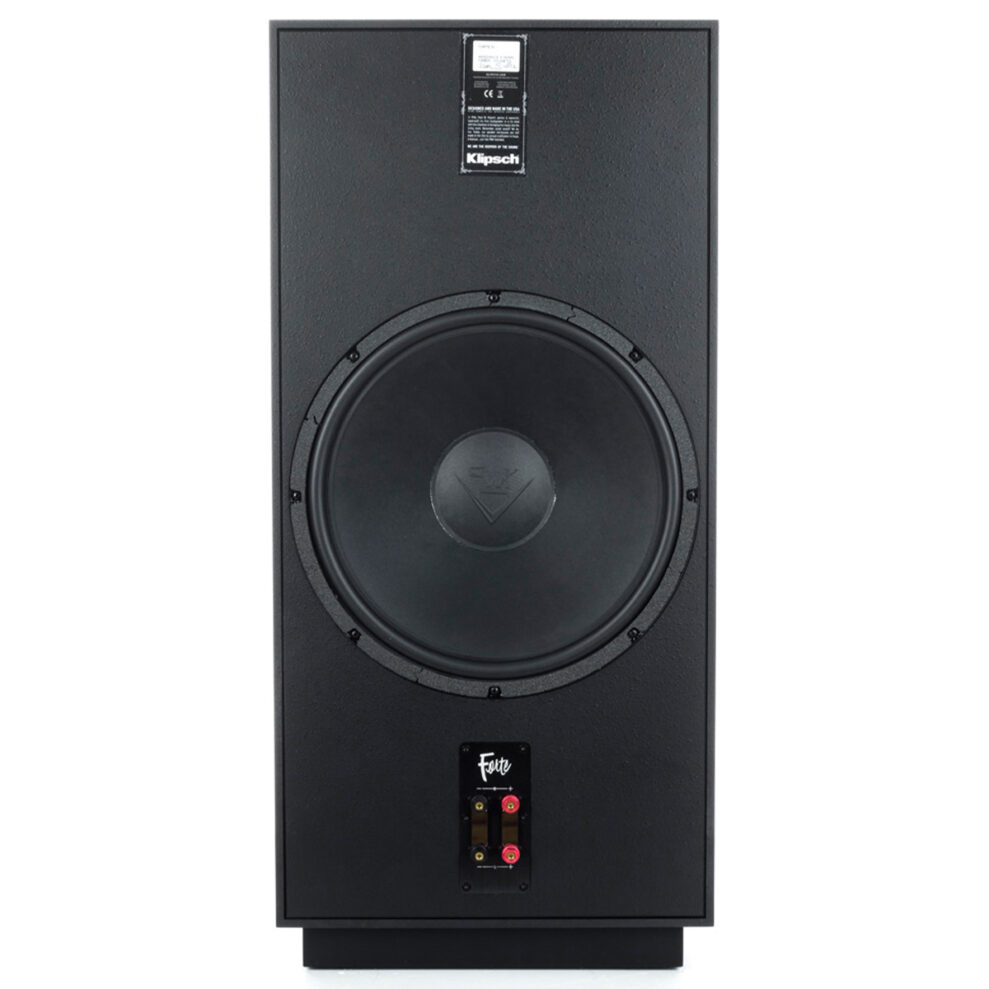
The party goes on
The new version of Forte is still one of the most festive speakers you can have fun with, but this time it’s not just four – chord guitar rock that sounds cool and captivating.
I remember that I was not completely satisfied with i.a. the piano sound on Forte III SE. Even a concert grand piano could sound a little too thin in the midrange. They suited Jerry Lee Lewis better than Glenn Gould’s Bach variations, one might say. But on Forte IV, it’s clear that Klipsch has worked on, and managed to tune the speaker for the better.
Klipsch says the speakers can deliver a sound pressure of up to 116 dB. I have no reason to doubt that. But even more important is how they play. Maybe the sound is not as refined and neutral as on a pair of Vivid Audio or Audiovector speakers, but heck, how entertaining.
The upgraded Forte IVs play bigger, fatter and taller than most for under GBP 10,000, and they do so with better balance and control than before. The predecessor did not thrive so well with classical music, but the new version can be thrown on both Bach and Beethoven without sitting and wrinkling his nose.
All the positives from the predecessor are also present here. Namely, an unusual cash bass dynamic, where the music is delivered with an effortless ease. The sound is still fuller than slim, but there is better balance and coherence.
Take e.g. Bach’s Cellosuite no. 3, where the bottom sound from the instrument is reproduced unusually strongly, and further up the scale the horn units follow without problems. On Bach’s Goldberg variations with Glenn Gould, the speakers bring out the soundtrack of the piano in an exemplary manner, and Gould’s hum in the background sounds exceptionally good between the piano notes.
With two more instruments in the mix on the live recording “Up For It” with Keith Jarrett, Gary Peacock and Jack DeJohnette, Forte IV delivers a rock-solid presentation, where you are drawn into the music with an overwhelming feeling of being present.
I have heard the fast runs on the double bass reproduced with more metronome-like precision, but that does not matter, because the notes flow organically and powerfully from the strings, and even moderate markings on the snare drum stand out live in the room, so you twitch a little each time.
The speakers do not just play bass with dynamic authority. Instruments much higher up the scale also get an effortless and natural presentation. Take e.g. the guitar and saxophone on “Cold Duck” with Al Jarreau. The guitar solo is presented further forward in the soundscape here, and there is more bottom sound and warmth in the saxophone than on the predecessor.
Another improvement is that the treble simply sounds cleaner and less distorted when playing loud. There is a risk that the cymbals mixed up in the soundscape may sound sharp and uncomfortable. Especially in a lively room with little or no damping. This happens to a much lesser extent with the Forte IV, which sounds more refined and fine-meshed than its predecessor.
At the other end of the scale, you notice that the speakers roll off in the bass roughly where an organ’s deepest frequencies lie. Because while double bass, percussion and a concert grand piano do not suffer any noticeable decrease in the bass response, Bach’s Toccata & fugue in D minor is not reproduced with full frequency range. It rumbles well in the spinal cord, but the deepest tones are not so noticeable.
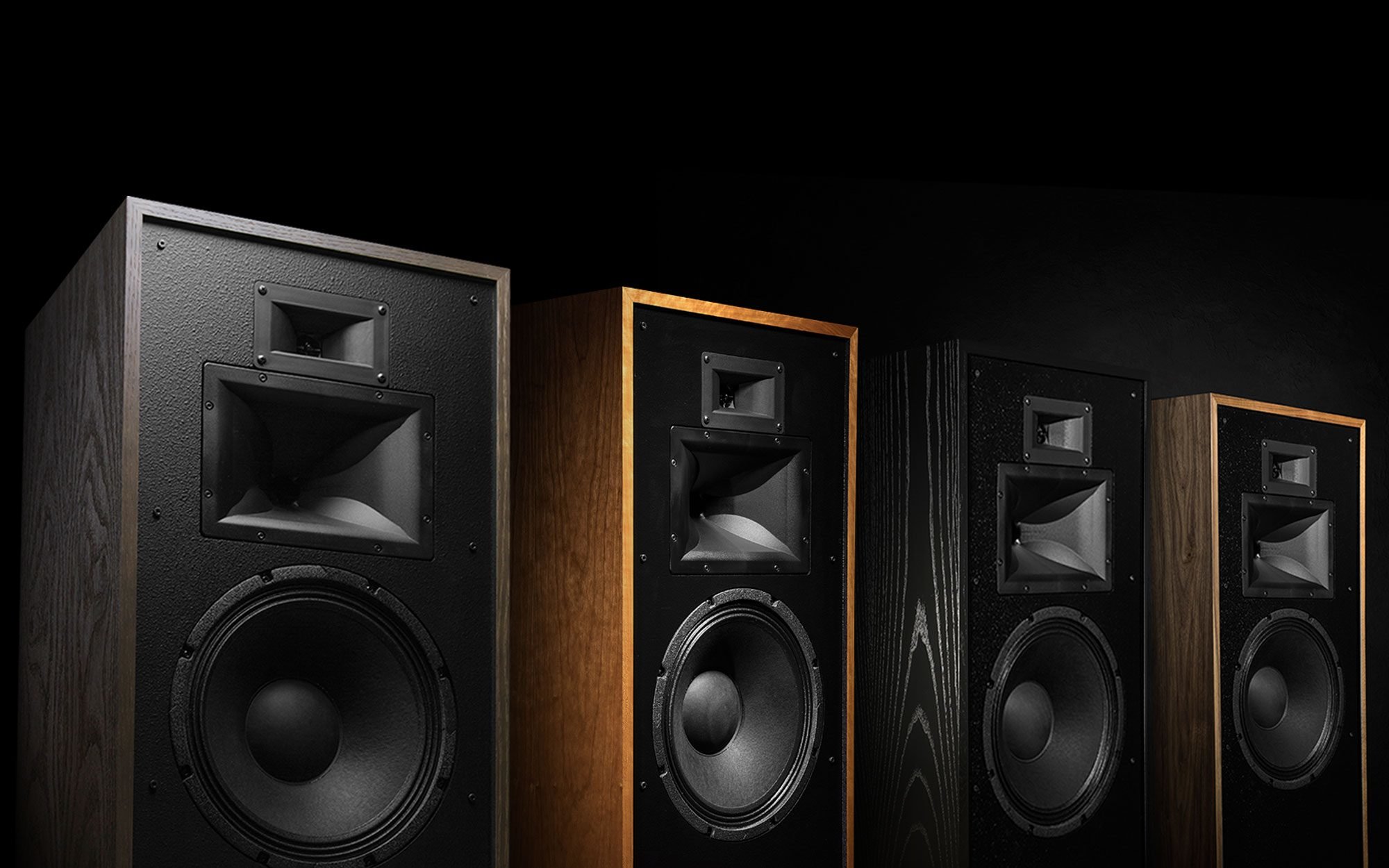
Conclusion
Klipsch Forte IV has become even better than its predecessor and demonstrates that when the basic recipe is so good, you do not change everything, but only where there is something to pick up.
The result is that a speaker that was a feast to listen to on the very most music has not only become a better speaker with finer focus, better balance, greater transparency and more finesse; it has also become more useful for music that may not always be associated with Klipsch.
This version is no longer just a “beer and crisps speaker” – as some might say prejudicedly – it fits just as well with sticks and champagne.

We think
Bone-hard dynamics with bold bass that you can feel in the body, and a large, open and transparent sound image. Plays loudly without effort. Rolls off relatively high in the bass. Quite a lot more expensive that its predecessor.
5000 €
Specifications
- Type: 3-way floor stand with bass reflex
- Woofer: 30 cm + 38 cm passive radiator
- Midrange: 4.45 cm K-702 compression unit in K-703-M horn
- Tweeter: 2.54 cm compression unit in K-79T horn
- Sensitivity: 99 dB
- Impedance: 8 ohms
- Frequency range: 38 Hz – 20 kHz (+/- 3 dB)
- Crossover frequency: 650 Hz, 5200 Hz
- Max. load: 100/400 W
- Recommended amplifier power: (not specified)
- Dimensions and weight: 90.8 x 42.2 x 33 cm / 32.7 kg
- Finish: Black ash, oak, walnut or cherry veneer
- Web: klipsch.com
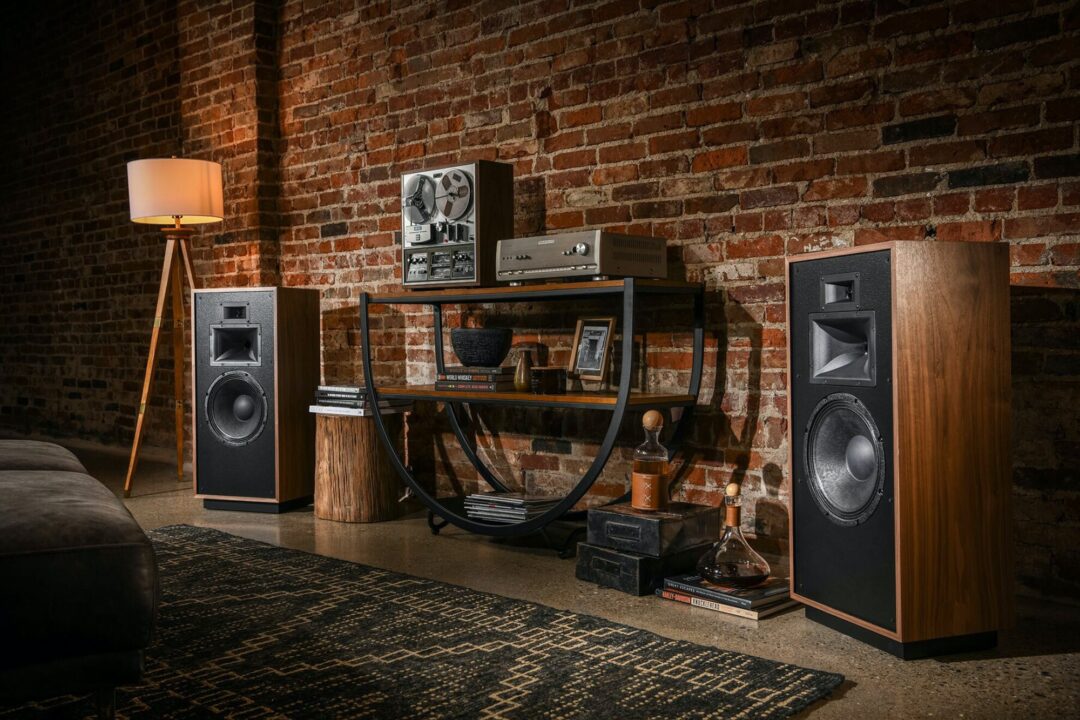

What amp is best used for this?